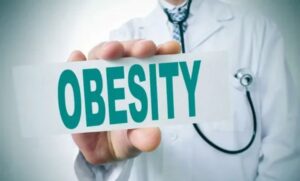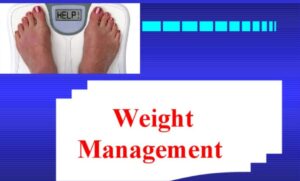Atherosclerosis stands as one of the major dangerous cardiovascular diseases that spreads commonly across contemporary society. The condition develops undetected across its latent periods, resulting in fatal heart attack and stroke conditions. Atherosclerosis and Nutrition are closely linked, as nutrition plays a crucial role in heart disease prevention as well as in the management of heart conditions. The extensive article investigates atherosclerosis by studying the root causes and signal indicators, and risky medical effects specifically through evaluations of preventive dietary measures and lifestyle modifications for arteries. For more information and personalized guidance on heart health and nutrition, visit Bear Goal.
What is Atherosclerosis?
Atherosclerosis is characterized by plaque formation in the arteries. Atherosclerotic plaque develops from the union of fat and cholesterol with calcium along with blood-substance compounds. Atherosclerotic plaque stiffens inside arteries as it compresses the blood volume which reduces oxygen-rich blood delivery to organs and tissues.
The American Heart Association (AHA) defines atherosclerosis as an arteriosclerosis type that commonly serves as the main cause of heart disease and strokes, alongside peripheral artery disease.
Causes and Risk Factors
Multiple risk factors exist for developing atherosclerosis, yet most risk factors can be prevented by controlling one’s diet and lifestyle.
Non-modifiable Risk Factors:
Age: Risk increases with age.
- Gender: Men develop this condition before women.
- Genetics: Family history of heart disease.
Modifiable Risk Factors:
- High LDL cholesterol
- Low HDL cholesterol
- High blood pressure
- Smoking
- Diabetes or insulin resistance
- Obesity
- Poor diet
- Physical inactivity
Harvard T.H. Chan School of Public Health establishes the dietary connections between clinical risk factors.
How Atherosclerosis Progresses?
The stages of atherosclerosis development include:
- The wall of blood vessels receives damage from smoking and elevated blood pressure while trapping excessive LDL levels.
- The artery wall becomes infiltrated by LDL cholesterol during this phase, known as the fatty streak formation.
- Macrophages absorb LDL cholesterol to form foam cells as the plaque continues to accumulate in the artery wall.
- An artery develops fibrous caps that protect plaques, yet lead to vessel narrowing.
- The rupture of a plaque results in blood clots that frequently produce heart attacks or strokes.
The Mayo Clinic presents an outstanding illustration to explain this condition.
Symptoms of Atherosclerosis
Atherosclerosis remains hidden until the state of severe disease develops. These symptoms that emerge during artery involvement depend on the specific artery under investigation.
- Coronary arteries: Angina, together with shortness of breath, constitutes typical symptoms.
- Carotid arteries: Sudden numbness, confusion, trouble speaking.
- Peripheral arteries: Leg pain during walking (claudication).
- Renal arteries: High blood pressure combined with kidney failure occurs as a symptom.
The National Heart, Lung Blood Institute the NHLBI details additional symptom information.
Complications of Atherosclerosis
- Heart attack
- Stroke
- Peripheral artery disease
- Aneurysms
- Chronic kidney disease
Cardiovascular diseases that begin with atherosclerosis maintain the position as the leading cause of death worldwide, according to statistics from the World Health Organization (WHO).
Health issues due to dietary choices serve as a fundamental determinant in preventing and managing atherosclerosis
Role of diet in Atherosclerosis
Diet serves as the most effectual approach for both atherosclerosis prevention and its current management. How different foods affect cholesterol levels and inflammation together with blood pressure determines whether they will protect or harm arteries.
For more detailed guidance on nutrition and healthy eating, visit Bear Goal Nutrition & Healthy Eating.
Artery-Friendly Foods
1. Fruits and Vegetables
These plant-based foods contain fiber, together with antioxidants along anti-inflammatory compounds.
Examples: Berries and leafy greens, and citrus fruits along with carrots and broccoli compose a group of artery-friendly foods.
Benefits: Healthy foods reduce oxidative stress and lower blood pressure while also improving cholesterol levels.
2. Whole Grains
The soluble fiber in these foods decreases the amount of LDL cholesterol in the system.
Examples: Oats, brown rice, quinoa, barley
Tip: Choose 100% whole grain products
3. Healthy Fats
Consuming unsaturated fats helps decrease blood cholesterol while also decreasing inflammation in the body.
Examples: Among healthy fats you can find avocados along with olive oil and nuts and seeds and fatty fish.
Avoid: Trans fats, along with excess saturated fats, should be avoided in your diet
4. Legumes and Beans
Plant protein and dietary fiber in these foods decrease LDL cholesterol levels.
Examples: Lentils, chickpeas, black beans
Tip: Introduce beans as an alternative protein source in place of red meat for minimum 2 to 3 times each week.
5. Herbs and Spices
These foods contain natural anti-inflammatory agents that do not increase sodium content in the body.
Examples: Garlic, turmeric, ginger, cinnamon
According to Harvard Nutrition Source, you can find specific recommendations about how to arrange your food on the plate.
Foods That Harm Your Arteries
1. Trans Fats
Found in many processed foods. Increases LDL and lowers HDL.
Sources: Fast food with any kind of frying also includes packaged snacks, along with margarine
2. Excess Sugar
Your body develops insulin resistance while raising triglyceride levels.
Sources: Soda, candy, pastries, sweetened cereals
3. Refined Carbohydrates
Your body increases blood sugar, and this leads to obesity.
Sources: White bread, white rice, pasta
4. High Sodium Foods
Increase blood pressure, damaging arteries.
Sources: The consumption of canned soups and processed meats, and fast food products
Nutrients that support vascular health
| Nutrient | Role in Heart Health | Food Sources |
| Omega-3 fatty acids | Reduce inflammation, lower triglycerides | Fatty fish (salmon, mackerel), flaxseeds |
| Soluble fiber | Lowers LDL cholesterol | Oats, legumes, fruits |
| Antioxidants | Protect against oxidative damage | Berries, dark chocolate, green tea |
| Potassium | Balances sodium and lowers blood pressure | Bananas, sweet potatoes, spinach |
| Magnesium | Supports blood vessel function | Nuts, seeds, and whole grains |
Eating Patterns to Fight Atherosclerosis Development
1. Mediterranean Diet
This eating pattern consists of mostly fruits, vegetables along with olive oil and fish, and whole grains. The food contains antioxidants with healthy fats that can benefit human health.
2. DASH Diet
The DASH diet follows the approach for halting hypertension through dietary measures. Designed to lower blood pressure. A diet plan featuring low sodium content while elevating potassium levels, along with calcium, in addition to fiber intake. For personalized guidance on adopting the DASH diet and managing blood pressure, you can request a free consultation.
3. Plant-Based Diet
Fully eliminates animal products or minimizes them drastically. This diet helps decrease cholesterol consumption alongside increasing fiber content.
Lifestyle Changes Alongside Nutrition
- Quit Smoking: The lining of the arteries experiences less damage.
- Exercise Regularly: Individuals should engage in 150 minutes of moderate-intensity physical activity each week.
- Manage Stress: Chronic stress increases inflammation
- Control Blood Pressure and Cholesterol: Through medication and diet
WHO endorses a combination of nutritious eating and regular physical activity as necessary to receive maximum protection.
Supplements: Are They Helpful?
Some dietary supplements have certain advantages that cannot replace the nutritional value of genuine whole foods.
Possibly Beneficial:
- Omega-3 fish oil
- Coenzyme Q10
- Plant sterols and stanols
- Fiber supplements (psyllium husk)
Caution:
Supplements require a doctor’s or clinical dietitian’s approval, especially when you are taking medications.
Conclusion
Proper nutrition provides sufficient protection against the progressive nature of atherosclerosis while helping to control its development and progression. People who eat heart-healthy whole foods may reverse arterial damage in its early stages, thus decreasing their risk of heart attacks and strokes, and other cardiovascular troubles. For guidance on nutrition tailored to your health and activity levels, visit Bear Goal Nutritional Requirements for Sports.
Your best defense against atherosclerosis comes from eating foods which are low in trans fats and sugar and sodium yet contain high levels of fiber and antioxidants and healthy fats. Your cardiovascular well-being will last throughout your life when you pair healthy nutrition with exercise control and stress reduction together with tobacco avoidance. For personalized health tracking, you can use the BMI Calculator, Ideal Body Weight Calculator, and Water Intake Calculator.






